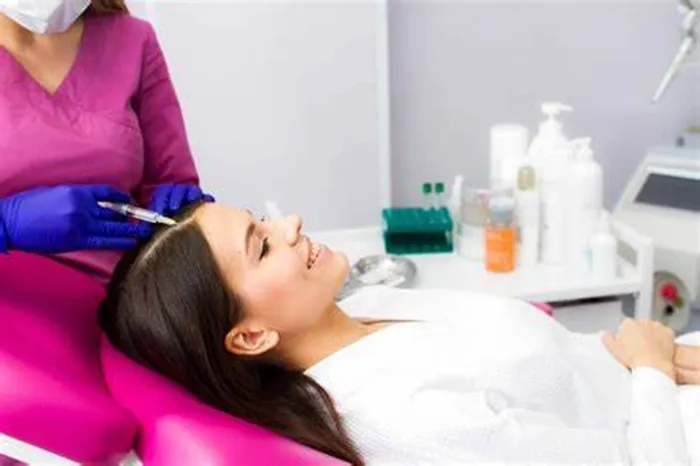In the dynamic field of hair restoration, Platelet – Rich Plasma (PRP) has become a widely – discussed and utilized treatment option. Understanding what PRP stands for is the first step in grasping the science behind this innovative hair loss solution. “PRP” stands for Platelet – Rich Plasma, a concentrated form of a patient’s own platelets suspended in plasma, the liquid component of blood. In this article, we will explore the significance of each component in PRP, its applications in hair restoration, and the impact it has had on the field.
Decoding Platelet – Rich Plasma
Platelets: The Key Players
Platelets are small, colorless cell fragments in the blood that play a crucial role in the body’s natural healing process. When a blood vessel is damaged, platelets are activated and aggregate at the site of injury. They release a variety of growth factors, which are proteins that stimulate cell growth, proliferation, and tissue repair. In the context of hair restoration, these growth factors can have a profound impact on hair follicles.
Growth factors such as Platelet – Derived Growth Factor (PDGF), Transforming Growth Factor – beta (TGF – β), Vascular Endothelial Growth Factor (VEGF), and Insulin – like Growth Factor – 1 (IGF – 1) are among the key substances released by platelets. PDGF stimulates the growth and division of dermal papilla cells, which are essential for regulating hair follicle growth. VEGF promotes angiogenesis, increasing blood flow to the hair follicles and ensuring they receive an adequate supply of oxygen and nutrients.
Plasma: The Carrier Medium
Plasma is the straw – colored liquid portion of blood that makes up about 55% of its total volume. It contains water, electrolytes, proteins, and various other substances. In PRP, plasma serves as the carrier medium for platelets and the growth factors they release. It provides a stable environment for the platelets and helps to deliver the growth factors to the target area, in this case, the scalp.
The Process of Obtaining PRP
Blood Collection
The journey to creating PRP begins with the collection of a patient’s blood. Usually, a small amount of blood, typically 10 – 60 milliliters, is drawn from a vein in the arm using a sterile needle and syringe. This autologous blood collection method is safe and eliminates the risk of immune reactions that could occur if using blood from a donor.
Centrifugation
After collection, the blood is placed in a centrifuge. The centrifuge spins the blood at high speeds, causing its components to separate based on density. The heavier red blood cells settle at the bottom of the centrifuge tube, while a layer called the buffy coat, which contains white blood cells and platelets, forms above them. The plasma rises to the top. To obtain PRP, the plasma and a portion of the buffy coat are carefully aspirated. The concentration of platelets in the resulting PRP can be adjusted by varying the speed and duration of centrifugation.
Growth Factors in PRP
PRP contains several growth factors.
- Platelet-Derived Growth Factor (PDGF): Stimulates cell proliferation and blood vessel formation.
- Transforming Growth Factor (TGF): Promotes tissue repair and reduces inflammation.
- Vascular Endothelial Growth Factor (VEGF): Encourages the growth of new blood vessels.
- Fibroblast Growth Factor (FGF): Supports the growth and differentiation of fibroblasts, which are essential for tissue repair.
These growth factors work synergistically to accelerate the healing process and improve tissue function.
Applications of PRP
Hair Restoration
PRP is increasingly used in hair restoration to promote hair growth and improve hair density. The growth factors in PRP can stimulate dormant hair follicles and enhance the overall health of the scalp.
Orthopedics
In orthopedics, PRP is used to treat conditions such as tendinopathies, ligament injuries, and osteoarthritis. The growth factors in PRP can accelerate the healing of injured tissues and reduce inflammation.
Dermatology and Aesthetic Medicine
PRP is also used in dermatology and aesthetic medicine to improve skin texture, reduce wrinkles, and enhance overall skin health. PRP can be combined with microneedling or other treatments to achieve optimal results.
Conclusion
PRP, or Platelet-Rich Plasma, is a powerful treatment option that leverages the body’s natural healing mechanisms to promote tissue repair and regeneration. By isolating and concentrating platelets from a patient’s own blood, PRP can be used to address a variety of medical conditions, from hair loss to orthopedic injuries. Understanding the role of platelets and the preparation process of PRP can help patients and healthcare providers make informed decisions about this innovative treatment.
Related topics:
- The Cost of PRP for Hair Loss: A Comprehensive Guide
- How Much Effective Is PRP for Hair Loss: What You Need To Know
- Blood Pressure Medications & Hair Loss: Is There a Connection?


